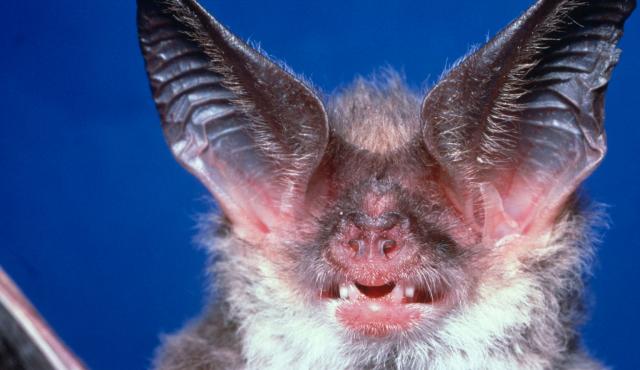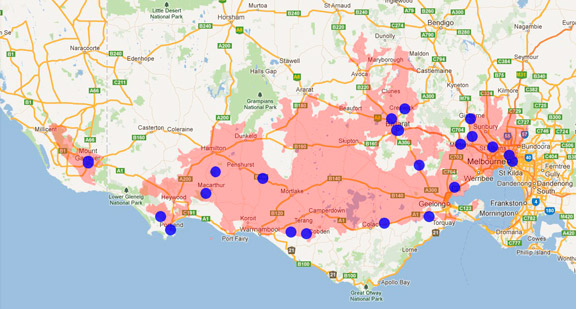A range of teacher professional learning programs will be developed to accompany the Biodiversity of the Western Volcanic Plains online outreach...


Lesser Long-eared Bat
Nyctophilus geoffroyi
Roosts in small holes and crevices in tree hollows, under bark and in buildings. Twins are generally born in late spring-early summer. Will forage amongst low foliage, on the ground or in flight.
| Details | Description |
| Type | Mammal |
| Group | Placental |
| Identifying Characteristics | |
| Distinctive Markings | The fur is distinctly bicoloured, darker at the base. There is a small distinctive Y-shaped nose-leaf present which assists with echolocation. |
| Diet | Carnivore. Moths, ants, cricket nymphs, spiders, beetles, crickets, bugs, lacewings and flies. |
| Habitat | Open grasslands, woodlands, rainforest, alpine vegetation, arid areas, temperate and tropical eucalypt forest and urban areas. |
| Native Status | Native to Australia |
| Taxonomy | |
| Phylum | Chordata |
| Class | Mammalia |
| Order | Chiroptera |
| Family | Vespertilionidae |
| Genus | Nyctophilus |
| Species | geoffroyi |

Distribution maps indicate current and historic locations where species have been sighted.
Source: Atlas of Living Australia
| Conservation Status | |
| DEPI Advisory List | Not listed |
| FFG Act | Not listed |
| EPBC Act | Not listed |
The conservation status of species is listed within Victoria and Australia.
The Department of Environment and Primary Industry (DEPI) Advisory List consists of non-statutory advisory lists of rare or threatened flora and fauna within Victoria.
The Flora and Fauna Guarantee Act 1988 (FFG Act) lists threatened species in Victoria. Under the Act, an Action Statement is produced for each listed species.
The Environment Protection and Biodiversity Conservation Act 1999 (EPBC Act) is the Australian Government’s key piece of environmental legislation, listing nationally threatened native species and ecological communities.



